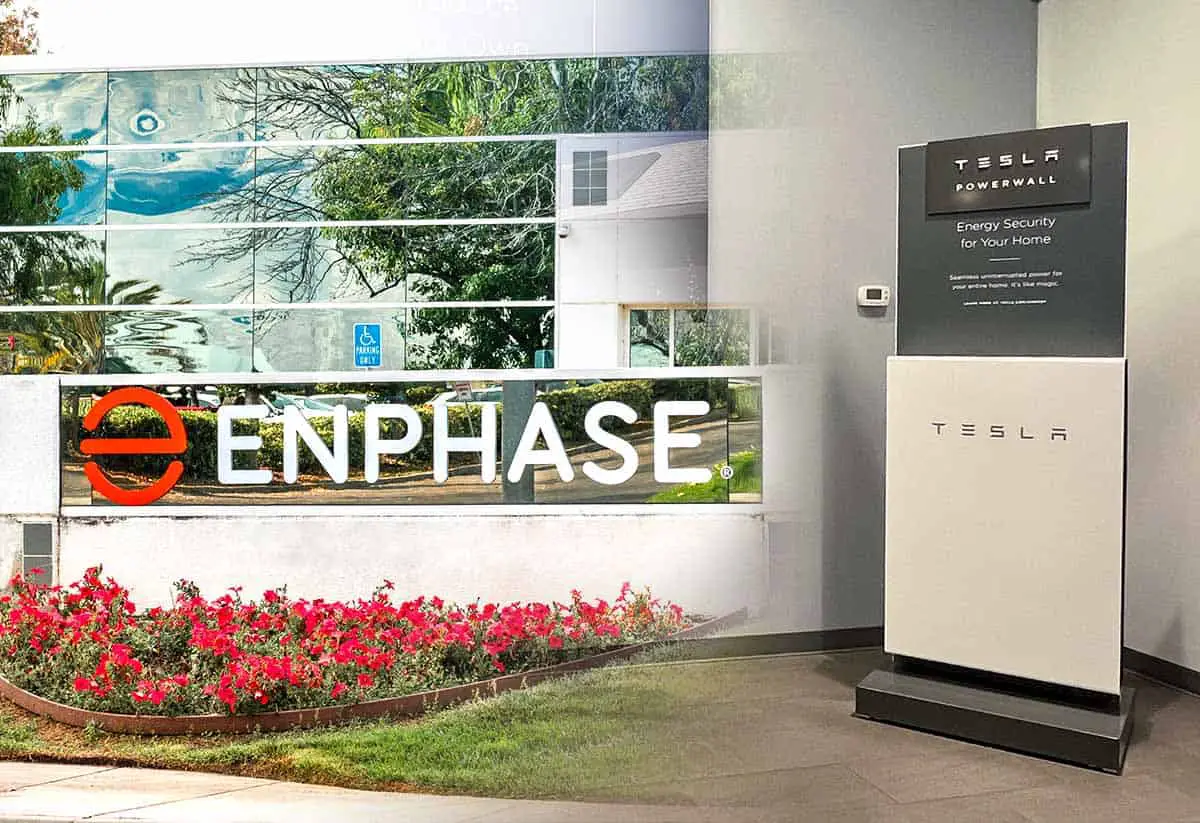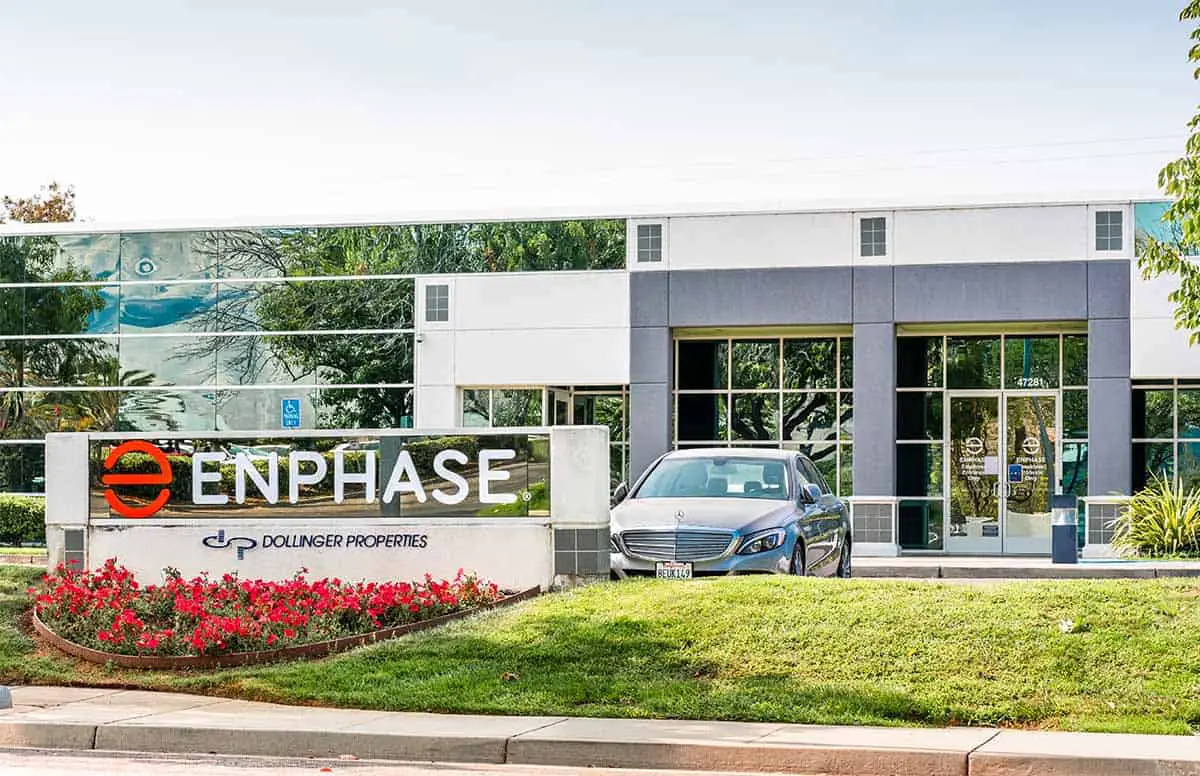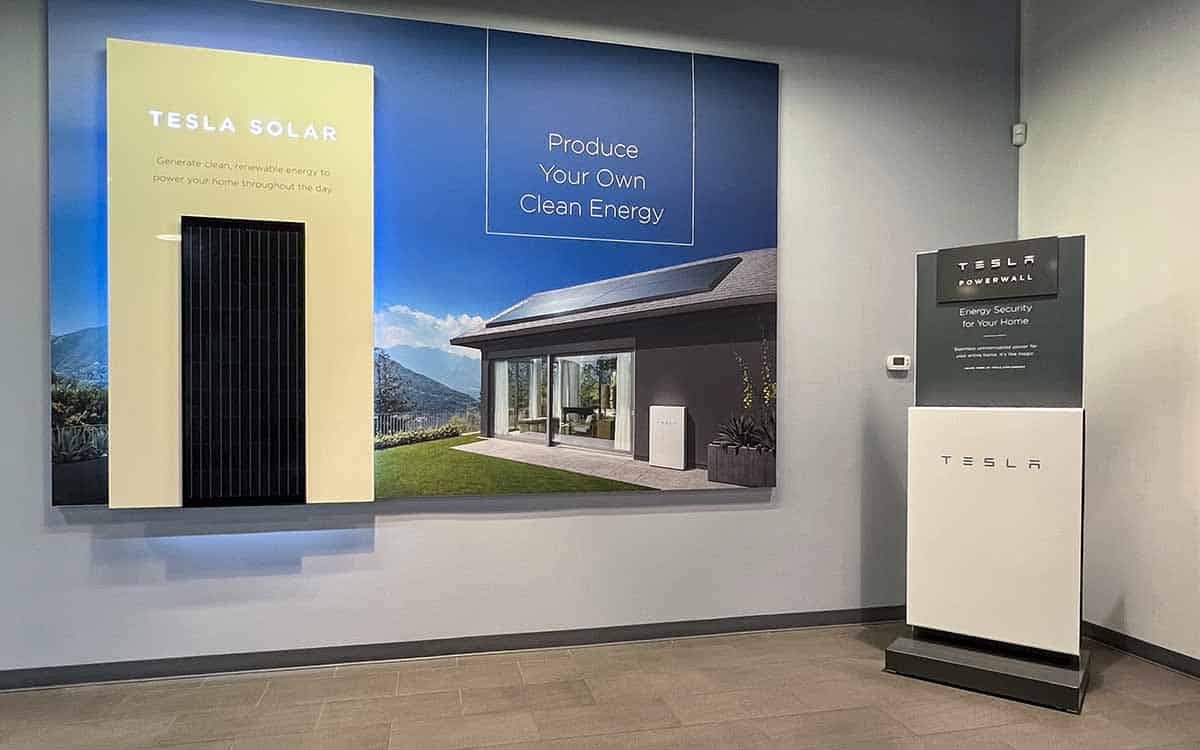Power outages are unpredictable, so having a good solar battery can make all the difference when you need power on command. If you’re in the market for a good battery, two particularly popular options are Enphase Encharge 10 and Tesla Powerwall.
Enphase Encharge 10 has a slight edge over the Tesla Powerwall in performance, reliability, and ability to control individual solar panels. The Powerwall has a larger battery capacity and is compatible with any third-party inverter. Also, it has a compact design with lower installation costs.
Deciding which one to go for can be challenging, especially when there are several factors you need to consider. Here’s an extensive guide comparing both energy storage solutions from various viewpoints so that you can make the best decision for your household.

Similarities Between Enphase Encharge 10 and Tesla Powerwall
As you may already know, both Enphase Encharge 10 and Tesla Powerwall are energy storage solutions. Their function is to provide backup power during grid outages and store energy generated from home solar energy systems.
Both devices come with a 10-year warranty and claim they will retain at least 70% of their total capacity by the end of this period.
A single Enphase Encharge 10 or Tesla Powerwall has enough capacity to power essential appliances for 24 hours or more. This includes devices that use 120 V loads, like lights, dishwashers, microwaves, and fridges.
While they can run heating, ventilation, and air conditioning systems, you’ll need at least two Enphase Encharge 10s or Tesla Powerwalls to provide sufficient power. On a single battery unit, both energy storage solutions can handle one window air conditioner.
They can also manage computers and video gaming consoles will enable Level 1 charging for electric cars.
With two units of either energy solution, you can power the electric range and oven, central AC, and other similar heavy-load appliances.
| Features | Enphase Encharge 10 | Tesla Powerwall |
| Performance | 5.7 kVA Peak3.84 kVA Continous | 7 kW Peak5 kW Continous |
| Weight | 341 lbs (154.7 kg) | 261 lbs (118 kg) |
| Capacity | 10.08 kWh | 13.5 kWh |
| Solar Panel Control | Complete Control Over Individual Solar Panels | No Control. Either On or Off. |
| Installation Costs | $18,000 – $20,000 | $11,500 |
| Cooling | Passive | Active |
| Battery Chemistry | Lithium Iron Phosphate | Lithium Nickel Manganese Cobalt Oxide |
Enphase Encharge 10: Pros & Cons
Enphase Encharge 10 is an all-in-one AC-coupled storage system. Essentially, this energy storage unit can handle a large number of solar panels. If you’ve been wondering about this unit, here’s a quick list of pros and cons to help you make a decision.

Pros
The Enphase Encharge 10 is considered premium for many reasons. Let’s take a look at a few of them:
Excellent Performance
One area where Enphase Encharge 10 excels is performance. If you have heavy appliances that require significant power to start, it won’t faze this battery as it has a peak output power of 5.7 kVA (kilovolt ampere) for 10 seconds. Once the appliances start running, it’s power output drops to 3.84 kVA.
The Enphase Encharge 10 is essentially three Encharge 3s combined. This means the total available continuous power is 10.08 kWh (kilowatt hour).
Regarding output current, the battery supplies up to 24.6 A for 10 seconds before dropping to 16 A. All this power is great, but it means nothing if the battery cannot make the most of the energy it stores.
With the Enphase Encharge 10, you can expect the device to provide 90% round-trip efficiency in output. Every system, no matter how greatly designed, loses some power, but a 90% retention is quite efficient.
Another benefit of using this energy storage solution is its ability to withstand failure. Each battery unit comes with its state-of-the-art microinverters. This smart component plays an essential role in reducing performance degradation during failure.
Inside the Enphase Encharge 10, you’ll find 12 of these microinverters. For starters, you don’t have to worry about reliability issues as they have been tested for over one million hours cumulatively. The inverter system also has an efficiency of 96.5%, so you retain a lot of power during conversion.
Now, if one of these microinverters fails, it doesn’t mean your battery stops working. Rather its conversion efficiency drops to 91.6%.
Solar Panel Control
Another area where Enphase Encharge 10 shines is in how it regulates the connected solar panels. Generally, these panels will produce electricity when exposed to direct sunlight. However, when you connect this battery to the solar panels, it can control them.
The solar panels will continue to charge the Encharge 10 until it is at maximum capacity. At this point, it can turn off individual solar panels. This is helpful as it ensures there’s always sufficient power available to meet the energy demands of your household.
Not only does this prevent energy waste, but it also improves efficiency. By controlling the output produced by the solar panels, you can make sure you only use the energy you need for various devices in the household.
However, to use this feature, you’ll need to connect additional microinverters to the solar panels.
Battery Chemistry
Enphase Encharge 10 is one of the few energy storage solutions that use lithium iron phosphate. One of the benefits of using this material is that it is safe to use. This means you don’t have to worry about accidental fires destroying your house due to battery damage.
This usually happens due to exothermic reactions within the battery. These reactions cause a thermal runaway— a continuous increase in the internal temperature —eventually resulting in battery failure.
Generally, most energy storage solutions use lithium-ion batteries, which are much more prone to thermal runaways and the likelihood of fires. Lithium iron phosphate cells are also much more stable at high temperatures.
Lithium iron phosphate batteries also have a longer lifespan. This means you can continue using the battery as storage without having to worry about significant loss in capacity over time. Although it’ll eventually need to be replaced like any other battery, this will happen much later.
The battery also avoids toxic elements like lead, nickel, or cobalt and has a lower environmental impact.
Finally, Enphase has taken an additional step to keep you safe. The Encharge 10 comes with UL 9504A battery safety certification to put your mind at ease.
The UL 9504A test is a series of multiple heat tests that check the battery for heat safety on four levels. This test covers everything from the heat production on the cellular level to how fire-safe the entire unit is. These tests are rigorous, so any unit with this certification can typically be considered fire-safe.
Passive Cooling
Passive cooling means the battery doesn’t use fans or similar components to cool its internals. Instead, it relies on the surrounding air for this process. This comes with the inherent benefit of fewer moving parts, reducing wear and the chance of component failure.
The Enphase App Cell Phone App
Enphase makes your power management tasks a breeze with their potent app, allowing you to remotely manage and control your system, including your solar array and Enphase batteries.
The app allows you to see at a glance how much energy is moving through each part of your system, where it’s going, your usable capacity, current energy consumption, and whether or not you have excess energy to sell.
The Enphase App can also enable Storm Guard mode, which automatically monitors the National Weather Service for severe weather warnings in your location. When detected, it switches your profile automatically to Full Backup mode.
Cons of Enphase Encharge 10
Although the Enhpase Encharge 10 has many benefits, it’s far from perfect. Here are some downsides to opting for this battery.
Incompatible With Third-Party Inverters
If you already have a solar storage system and want to increase the energy storage capacity, the Enphase Encharge 10 might seem like a no-brainer. After all, you get great performance, and its lithium iron phosphate cells could be the icing on the cake.
Unfortunately, there is a high chance you’ll face compatibility issues. If you have a solar inverter from another manufacturer, the Encharge 10 might not work as it’s only compatible with Enphase equipment.
If you haven’t installed anything yet, this shouldn’t be a problem. On the other hand, if you have a Tesla network, you’ll have to take apart the entire system and replace it with Enphase products.
Expensive
Another reason people are apprehensive about getting the Enphase Encharge 10 is the cost. If you need to get the entire setup, you’ll spend around $18,000 – $20,000. Keep in mind that this is an estimate. Depending on the scope of work, you may have to shell out more.
Heavy
The Enphase Encharge 10 uses lithium iron phosphate to remain safe, but that has come at the cost of its weight. Lithium iron phosphate batteries are heavier than lithium-ion. In fact, the Encharge 10 is considerably heavier than the Tesla Powerwall, which can influence where you install it in your household.
A single battery unit will weigh 97.4 lbs (44.2 kg). Keep in mind that there are three units inside Enphase Encharge 10. The cover and mounting bracket increase the weight by 48.7 lbs (21.1kg). Overall, the entire battery weighs 341 lbs (154.7 kg).
Tesla Powerwall: Pros and Cons
Now that you know what you can get realistically from the Enphase Encharge 10, let’s shift focus to the Tesla Powerwall. This is another great option if you want a reliable energy storage solution. I’ve created a list of pros and cons to help you decide whether this battery is for you.

Pros
The Tesla brand has undoubtedly been a determining factor for many. However, this storage option has enough pros to hold its own even without the free publicity of its brand name.
Low Cost of Installation
One major reason people prefer the Tesla Powerwall over other energy storage solutions is the installation cost, especially when you compare it to the Enphase Encharge 10. To install a single unit in your household, you’ll need to pay at least $11,500.
This minimum should be enough for most essential appliances. You’ll need two or more batteries for a complete backup for your household. While this will bring up the cost to $18,500, you’d have to pay more for an Enphase Encharge 10 unit.
Also, if you purchase several Powerwalls, the cost of each successive unit comes down. Check out this article if you want to know how many Tesla Powerwalls you need for your household. I’ve written an in-depth guide explaining how you can calculate your home’s energy requirements.
High Battery Capacity
Although the Enphase Encharge 10 comes at a premium, it doesn’t necessarily mean you get the best value per charge. Despite the higher cost, it has a lower capacity(10.8 KWh) than the Powerwall, which offers 13.5 kWh. This equates to around 20% more capacity.
Although it may not seem like much, it can make a difference when you’re relying on backup power past the 24-hour mark. For instance, if you run into a power outage, you can charge essential devices for longer.
Depth Of Discharge
The 100% depth of discharge that the Powerwall has will allow you to pull every last drop of its 13.5 kWh capacity should you need it. The Enphase Encharge 10 does not allow this. However, it may not be good practice, in the long run, to completely discharge your Tesla Powerwall battery systems for the sake of battery longevity.
Top-Tier Performance
You may assume that since you would pay a lot more for the Enphase Encharge 10, you’d get an equivalent increase in performance. While this is generally true, it doesn’t measure up compared to the Tesla Powerwall.
For starters, it can provide a peak power of 7 kW for 10 seconds. After this period, the power drops down to 5 kW. Another benefit of this appliance is that you can connect up to 10 Powerwalls in a row.
Although this is overkill, it gives you an idea of how you can upgrade your energy storage over time and could be viable for large-scale power solutions.
Stylish Design & Low Weight
Tesla always puts a lot of thought into the design of their products, and it shows on the Powerwall. It has a sleek design and will fit easily into any section of your home.
Although this shouldn’t be a deciding factor for the Powerwall, it’s much more aesthetically pleasing.
The Powerwall is also relatively light, especially compared to the Enphase Encharge 10. The total weight of the battery assembly is 261 lbs (118 kg).
Compatible With Any Inverter
Another area where the Tesla Powerwall excels is compatibility. Unlike Enphase, Tesla doesn’t have any restrictions when it comes to using third-party inverters. This means you don’t have to install a new system if you want to increase the capacity of your existing energy network.
The Tesla App
Just like Enphase, Tesla offers their clients the ability to manage their Tesla Powerwall from anywhere via the main Tesla App, i.e. the same one that Tesla electric vehicle owners use.
Using the Tesla App you can see a real-time power flow to understand how your Powerwall, solar installation, and grid connection work together.
The app helps you see trends in your home energy use, such as to what extent your home is self-powered or how much your solar power offsets your usage.
Cons of Tesla Powerwall
Although there are plenty of benefits with the Tesla Powerwall, there are also downsides to this storage unit. Tesla had to cut corners with this appliance to reach a lower price point. Here are the several downsides of owning the Tesla Powerwall.
Cannot Control Solar Panel System
One major reason the Tesla Powerwall is cheaper than the Enphase Encharge 10 is its inability to control solar panels when off-grid.
Without the power grid, the entire system loses its ability to properly regulate the power the system produces. Ideally, the solar panels should redirect excess and manage output when the battery is full.
However, the opposite happens since the Powerwall cannot regulate this correctly. Once the battery is full, the system shuts off to drain it, then turns back on to fully recharge it. This happens on a cycle and is extremely wasteful.
Also, since it essentially keeps your system in a perpetual loop, it wears it down much faster. Most equipment is only good for a certain number of useful cycles. Once they reach this number, their efficiency drops significantly, and they eventually give out.
Still, Tesla offers a 10-year warranty, regardless of how many cycles you’ve gone through with the battery, you may replace it frequently.
Active Cooling and Lithium-ion Batteries
Active cooling is a double-edged sword. On the one hand, it keeps your batteries at optimal temperature. On the other hand, it means more moving parts. This isn’t a problem to start with, but dust and wear can take their toll over time.
That said, it benefits from a more consistent cooling option that’s less dependent on position.
The Powerwall also features lithium-ion batteries, unlike the lithium iron of the Enphase. While lithium-ion batteries are powerful in their own right and quite common, they’re not as durable as their counterpart.
So, while they might have a larger capacity on paper that will drop over time, an Enphase with an initially lower capacity might eventually run better given enough time for the lithium-ion battery of the Powerwall to degrade.
Price Increments and Delays
While Tesla is making great strides in the energy storage industry, it hasn’t been smooth sailing for the company. As they’ve missed several deadlines and faced delays, the price of these batteries has also increased three times over the last two years.
For a company of Tesla’s stature, missed deadlines and rollout delays should not be a regular occurrence, especially when competitors release new products at competitive prices or reduce the price tag of existing products. Customer support with Tesla is reportedly also not always helpful.
You might find this article helpful, which answers the question “is the Tesla Powerwall worth it?”.
Final Thoughts
The Enphase Encharge 10 and the Tesla Powerwall are both wonderful options, and you can’t go wrong with either. However, Enphase Encharge 10 is the overall better contender. It’s much more durable and gives you more mileage overall.
However, the Tesla Powerwall is still a great option, especially if you’re looking to cut as much cost as possible. While it doesn’t quite match up to its contender here, it still punches above its weight.
Click to read my in-depth comparison of the Generac PWRCell Vs Tesla Powerwall here.
- Tesla Charger Installation Cost (Home Setups) - March 1, 2024
- Tesla Phone Key Disconnected (Troubleshooting Guide and Quick Fixes) - March 1, 2024
- Tesla FSD 12 (Explained) - March 1, 2024